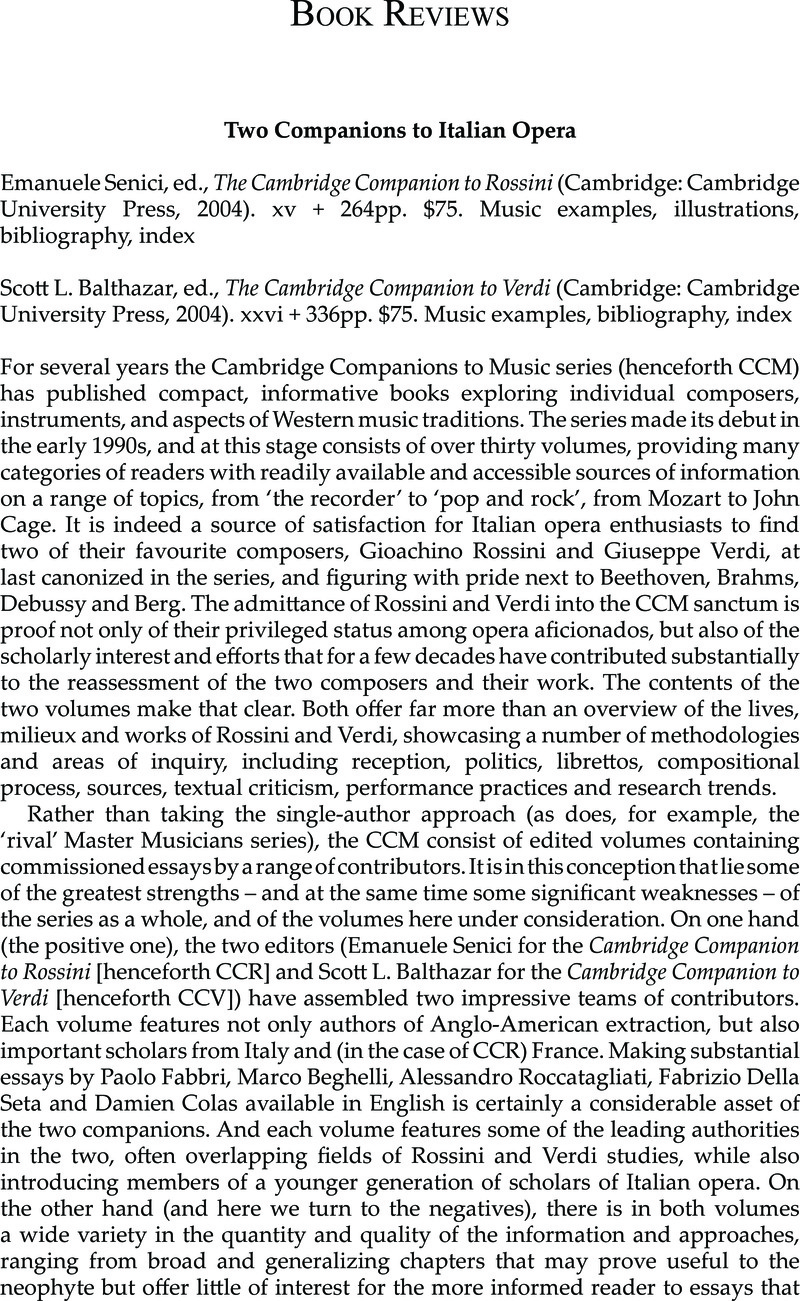Published online by Cambridge University Press: 13 April 2011

1 Verdi: A Biography (Oxford and New York: Oxford University Press, 1993).Google Scholar
2 Parker, Roger, ‘’Arpa d’or dei fatidici vati”: The Verdian Patriotic Chorus in the 1840s’ (Parma: Istituto Nazionale di Studi Verdiani, 1997). A shorter version of this study appears as ‘‘Va Pensiero and the Insidious Mastery of Song,” in Leonora's Last Act: Essays in Verdian Discourse (Princeton: Princeton University Press, 1997), 20-41.Google Scholar
3 Philip Gossett, ‘Le ’edizioni distrutte” e il significato dei cori operistici nel Risorgimento’, Saggiatore musicale 12 (2005): 339-87, English trans., ‘‘Edizioni distrutte” and the Significance of Operatic Choruses during the Risorgimento,’ in Opera and Society in Italy and France from Monteverdi to Bourdieu, ed. Victoria Johnson, Jane F. Fulcher, and Thomas Ertman (Cambridge: Cambridge University Press, forthcoming). Another critique of Parker's approach is George Martin's ‘Verdi, Politics, and ’Va, pensiero”: The Scholars Squabble’, The Opera Quarterly 21 (2005): 109-32.
4 ‘’La solita forma” and the Uses of Convention’, Acta Musicologica 59 (1987): 65–90.Google Scholar